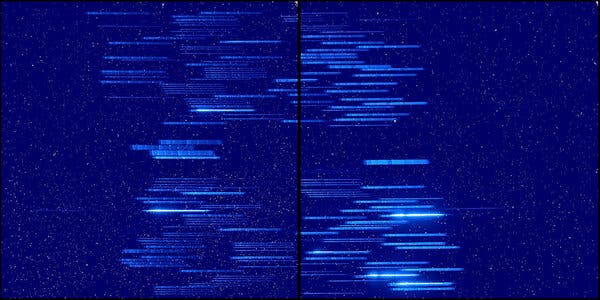Some 1,350 light-years from Earth, astronomers detected strange pairs of unexplained objects orbiting in the Orion Nebula. Since then, about 12 months ago, other scientists have proposed a new potential explanation for these apparitions, while other researchers wonder whether they exist at all.
“There’s a bit less confidence they exist,” said Rosalba Perna, a theoretical astrophysicist at Stony Brook University. But “even just having one would revolutionize what we thought was possible” for star and planet formation.
Using the James Webb Space Telescope, astronomers have started to reveal the Orion Nebula in glorious detail, showcasing the brilliant swirling clouds of dust and gas that will give rise to hundreds of stars in the next few million years.
Two scientists, Mark McCaughrean at the Max Planck Institute for Astronomy in Germany and Samuel Pearson from the European Space Agency in the Netherlands, detected more than 40 pairs of objects similar in mass to Jupiter floating within the nebula. They named the objects Jupiter Mass Binary Objects, or JuMBOs.
The JuMBOs suggested something was wrong in our understanding of star and planet formation. Stars form from the gravitational collapse of dust and gas, but JuMBOs appeared to be too small to have undergone this process, suggesting they formed as planets around stars that were then ejected. However, their presence in pairs complicates this scenario. It is unlikely that dozens of pairs of planets thrown from a star would end up orbiting one another because of their low gravitational attraction.
